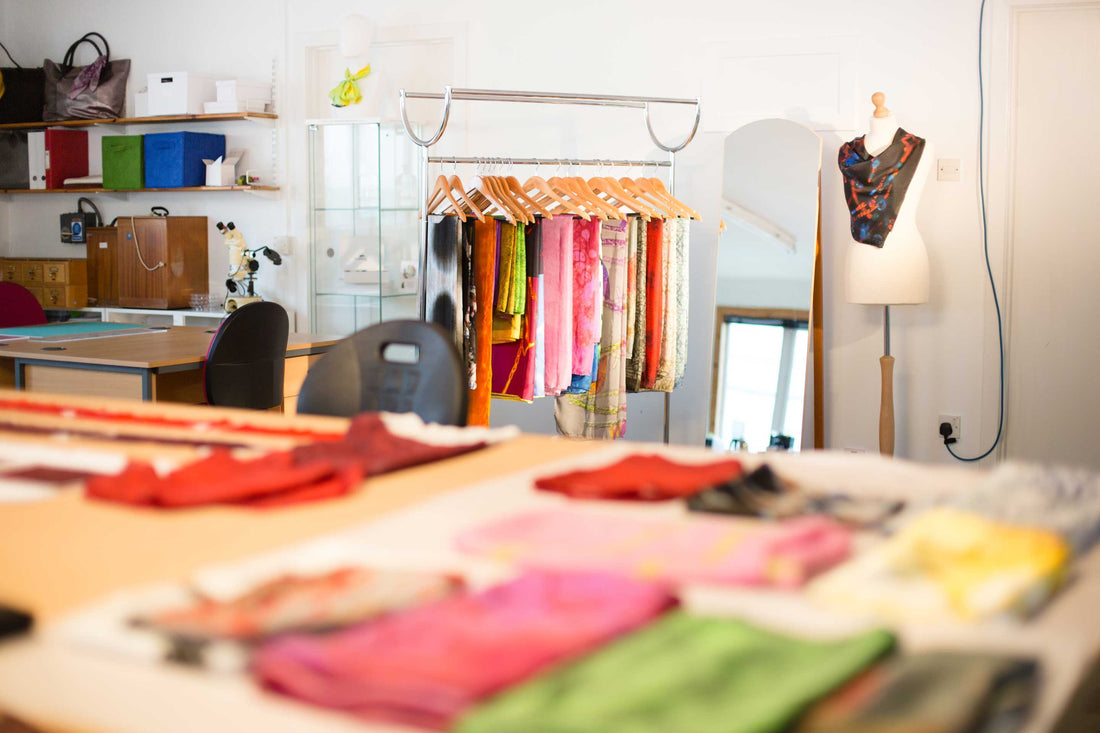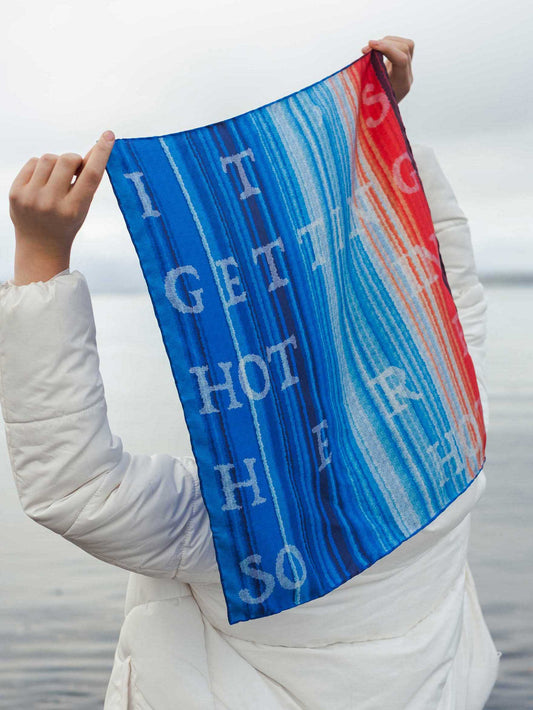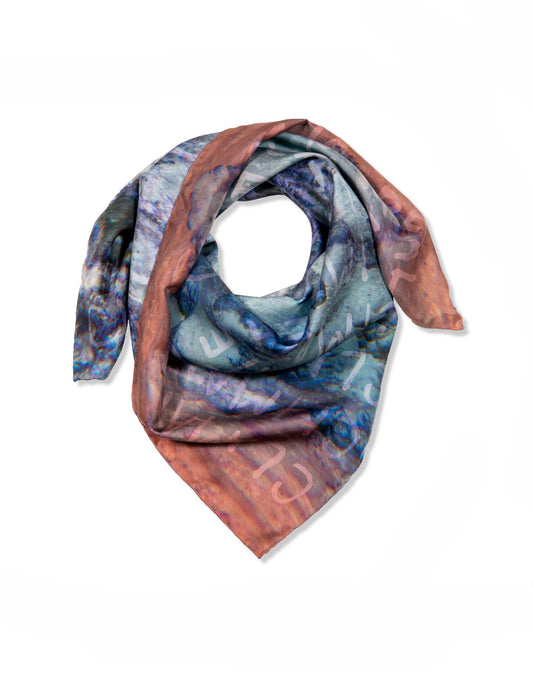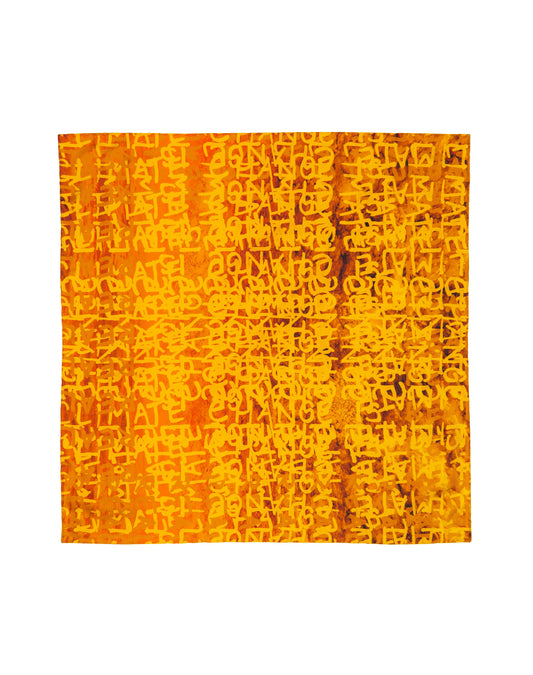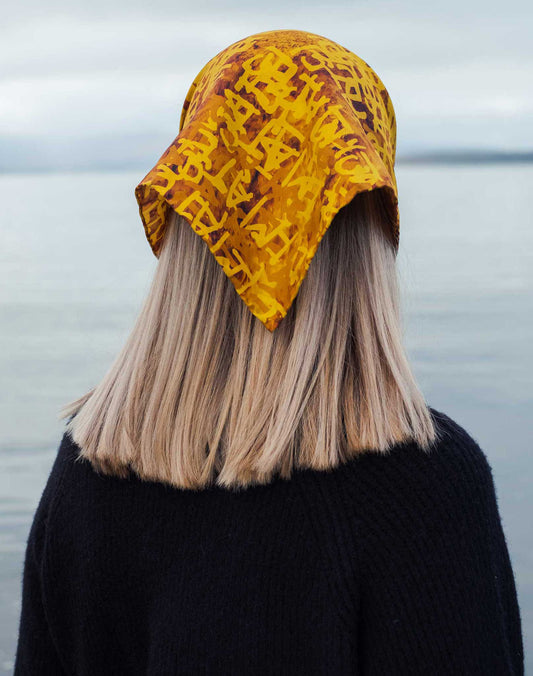I want people to fall in love with the ocean...
"Science and art are two not so distant expressions of the same attempt to try to make sense and understand the world around us. The former, through the study of the tangible physical and elemental reality of our planet and the universe we sit in. The latter, through the more abstract reflection and expression of the world surrounding us, interpreted and experienced in the intangible realm of the world inside us." - Jessica Giannotti
Jessica is the founder and the Creative Director at Crùbag. She designs with love and quirkiness, searching for those unseen natural patterns and hidden processes and aspects of the oceans we've never seen and felt, but which do exist and have a huge impact on our planet as a whole and help make this planet a liveable home. Explore with us the exciting design and collection development processes at Crùbag.
Crùbag is all about collaboration and team effort.
Each collection and project is designed by Jessica and is focused on a specific marine science or sustainability theme and requires a unique multidisciplinary team to bring it to life. Each product belongs to a collection, which is paired with engaging science and ocean literacy content. This content is then linked to our Crùbag Campaigns to make it relevant for you and present it in a wider context.
To materialise the inspiration and create a complete textile collection with added value, Jessica works with marine scientists, research institutions, photographers, editors and specialists mentors. It is indeed a team effort. For some projects, we also collaborate with other artists and designers.
Our designs and patterns are directional, organic and unexpected; from elegant kaleidoscopic shapes, to sumptuous abstracts or bold and colourful representations. Mystery and hidden meaning and messages are carefully incorporated into the artwork, some connected to the subject and some from the connection to her childhood experiences, dreams, abstractions and reflections of the designer.
When designing, Jessica uses a combination of software, photography, microscopy imaging, illustrations, sketches, drawings, prints and artistic interpretations to create bold representations, patterns, textures, abstracts and unexpected subject depictions.
Sometimes I look down the microscope and make my own pictures, but I mostly use the wealth of research images created by our scientist partners to understand something unique. Their passion, hard work and dedication take me from the microscope to samples of sand grains from the sand-fraction in seamounts in Oman to algae in a petri dish infected with a beautiful red pathogen. I also love those samples and images taken by unmanned vehicles in the darkest corners of the deep sea or by scientific divers near coastal areas. This work is complemented with beautiful seascape and environmental photography of the oceans taken by amazing photographers and by us at Crùbag.
With all information, data and imagery gathered, a sense of colour and textures starts to emerge, depending on what kind of organisms and ecosystem are involved. From there, I create a mood-board. This is an open process, and I don’t judge it. I just pin down things as they come to me in a flow, anything that sparks and inspires me. It is a very personal process. In some collaborations, this process is shared. It is important to have an aesthetic, a point of view while remaining true to the scientific facts, find an angle and present a unique story, not do the same as everyone else but find that unique theme that will make us fall in love, wonder and want more.
Now I start making sketches and playing around with the images. I create a palette of colours and think about materials and base-fabric. This part is conscious, planned and carried out with discipline. I leave around 10-25% for the unknown, for the subconscious inspiration to emerge and intervene. This combination is what makes each design artful and unique and cannot be repeated. Sometimes it surprises me.
"Jessica's vision is unique because we are so often focused on creating visual themes in fashion inspired from land, rather than the ocean. Crùbag challenges these conventional notions of textile print in our fashion industry and creates discussion around the education of marine science."
— Fiona Fung, Designer
How our collections are developed - by Jessica
Before a collection is made, I explore and try to gain a sense of the world around us and what is happening. My studio is based at the Scottish Marine Institute, giving me access to a huge range of projects and wonderful people and facilities. I am also very fortunate to be connected to a wider international scientific community.
The next step is to look for inspiration and to visit, interact and chat with marine scientists from different parts of the world. They all have stories to tell and do incredible work to shine a light on how our ocean and the natural environment work. It is fascinating to hear what exciting scientific discoveries they have made and what it means for society. For me it feels like I am exploring with them. Finding out about so many lovely projects and what is happening on our planet is a huge privilege.
The first stage is about linking my intrinsic inspiration to the external inspiration coming from exploring and looking at the exciting work of scientists and the search for information on the oceans, its ecosystems and pressing environmental issues. I try to connect all of that to the inspiration found in people and nature, its colours, smells and sounds, walking at the beach, diving or snorkelling, visiting a city and even taking pictures around random places where beauty or interesting features are unexpectedly found. Then I let the subconscious work for a little while.
Now it’s time to select a project from a list of potential themes, collaborators and a draft timeline. Sometimes I’ve been approached by a scientist directly, sometimes the opportunity presents itself as it was meant to be and sometimes I wait a long time for the right moment.
This is the crucial part, establishing a collaboration and a journey together with the scientist as a partner and other possible team members. I love this part, each collection is a unique world with its own set of rules, aesthetics and messages. A collaboration is a partnership based on trust and mutual admiration and the desire to bring out relevant ocean stories worth telling.
Once a collaboration is established, I proceed to reading about the research, interview the scientist and other people involved and look at relevant research images and samples. It’s a great way to make friends. Gathering materials, images and data and looking at samples is key at this stage. It is not about pretty images, it’s about looking for information and images which convey something that can be used in the creation and design process. This process can take several months.
Designs and patterns start to emerge and gain form and colour. I then decide what will be an individual design, what will be a repeat pattern, whether the colours will be the same as they are in nature or whether I will change them according to the colour palette or a more spontaneous result. Then I choose those designs which I think can be part of the collection.
Now we have to think about fabrics, finishings and textures. We start sampling and repeat the process several times until we know it’s right.
Parallel to designing and sampling, we start developing the story and science outreach content. This is crucial and a key aspect of our work. Each collection has a unique team that contributes to the content creation. We shape the stories and content together with the scientist and then the output is revised and checked by copyrighters and other scientists not directly involved in the collections. It is important to be reviewed and corrected when necessary.
This approach helps us present sound scientific information alongside our creative work. We document the story behind the collection providing science outreach to our lovely costumers so that they know what the design is about and to fulfil our mission to spread ocean literacy and love for the natural environment.
The customer will connect to the oceans, have their own inspiration and a story to tell. That is why I love to share the science behind the designs. Once the prototypes are made, and the content is ready, we do a photoshoot and go into production. We launch the collection on the website and at events. It is a unique and exciting journey. Every collection is a labour of love.

